From Soil to Spoon — Every Step Matters
Our farming process is built on three strong pillars: Scientific Methods, Traditional Wisdom, and Traceable Practices. Whether we cultivate on our own farms or through contracts and FPOs, the goal remains the same — clean, authentic, and value-rich harvests.
The 7 Pillars That Define Our Farming Practices
🧱 Pillar 1: Seed Selection & Sourcing
🧱 Pillar 2: Soil Preparation & Enrichment
🧱 Pillar 3: Natural Crop Cultivation
🧱 Pillar 4: Pest & Disease Management
🧱 Pillar 5: Harvesting at Peak Potency
🧱 Pillar 6: Post-Harvest Handling & Primary Processing
🧱 Pillar 7: Traceability & Batch-Wise Documentation
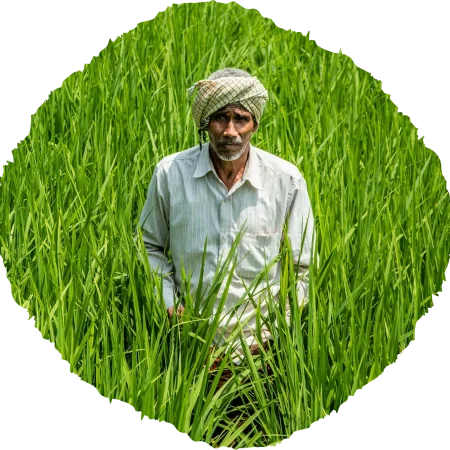
🧱 Pillar 1: Seed Selection & Sourcing
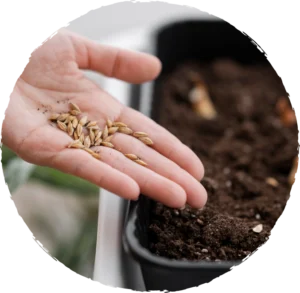
It begins with a deep commitment to choosing the right seed for the right land — combining data, tradition, and transparency to create long-term success for both farmers and buyers.
- Land & Climate Assessment
- Scientific Variety Testing
- Traditional Knowledge Application
- Sustainability Focus
- Full Traceability Built-In
We choose seeds only after reviewing:
Germination rates (lab-tested before each cycle)
Yield potential specific to the climate zone
Whether it’s GMP-compliant or non-GMO
Growth period, pest resistance, and required care
We also document and store this data in our farming system for ongoing learning and refinement.- we consult local farmers and elders to understand which seed varieties have natural resilience
- Promote seed rotation to avoid monoculture risk
- agged with source, batch number, and germination report
🧱 Pillar 2: Soil Preparation & Enrichment
Our method of soil preparation is a careful balance of science-based testing, traditional enrichment, and process-based documentation to ensure long-term fertility and purity.
- Scientific Soil Testing & Diagnosis
- Customized Enrichment Based on Crop Type
- Traditional Practices That Still Work
- Hybrid-Chemical Commitment
- Enrichment method & ploughing dates With Traceability
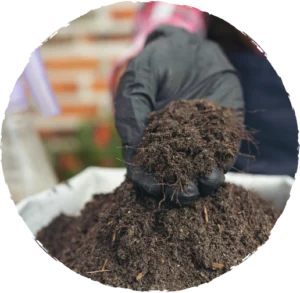
Before every sowing cycle, we collect soil samples from each plot and send them for lab testing to understand:
Nutrient profile (NPK, Zinc, Boron, etc.)
pH level and EC balance
Organic carbon presence
Soil texture and microbial life
Vermicompost, cow dung compost, or farmyard manure
Bio-fertilizers (PSB, Azotobacter, Trichoderma)
- We use Jeevamrut, Dashparni Ark, and buttermilk-fermented sprays
- we do not use synthetic urea, DAP, or chemical boosters in pre-sowing preparation
Each farm block is assigned: a soil report ID & A record of organic inputs used
🧱 Pillar 3: Natural Crop Cultivation
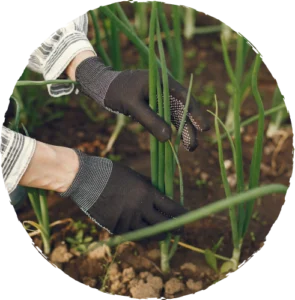
Our cultivation practices are based on creating a natural ecosystem around each crop — where soil, plant, air, and farmer work together in harmony.
- Crop Planning Based on Soil & Season
- Organic and Natural Inputs Only
- Scientific Methods That Support Us
- Traceability in Every Step
Each crop is carefully chosen based on:
Soil fertility and water availability
Seasonal timing (kharif, rabi, or round-the-year)
Market demand and future buyer requirement
This reduces resource waste and helps maintain consistency in yield and quality.- Plant-based pest repellents like Dashparni Ark, neem oil, or garlic-ginger sprays
- Jeevamrut, Beejamrut, and Cow dung slurry
- Traced to the exact application date and farmer
- Lunar calendar-based sowing and harvesting for herbs and roots
- Crop rotation and companion planting & Respecting local biodiversity
🧱 Pillar 4: Pest & Disease Management
we follow a holistic and preventive approach to pest and disease management — one that respects nature’s balance, strengthens plant immunity, and protects both the farmer and the consumer.
- Preventive Planning First
- Monitoring & Early Detection
- Natural Pest Control Methods We Use
- We may use safe, residue-compliant bio-pesticides
- Enrichment method & ploughing dates With Traceability
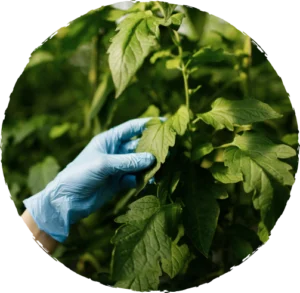
We don’t wait for problems to appear — we plan for prevention:
Healthy seed + strong soil = natural resistance
Crop rotation to break pest cycles
Mixed cropping & trap crops (like marigold or castor near vegetable plots)
Proper spacing and airflow to avoid fungal attacks
Leaf damage, spots, wilting
Larvae, insect eggs, or sudden discoloration
Unusual weather-based stress symptoms
This reduces the need for emergency treatments later.- very such input is approved by our field team, applied in traceable quantity
🧱 Pillar 5: Harvesting at Peak Potency
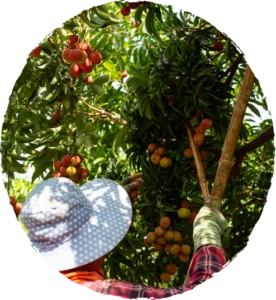
it’s the moment of truth. The moment when months of soil care, organic inputs, and farmer effort must translate into a product that holds its flavor, nutrients, aroma, and actives.
- When We Harvest — Timing Is Everything
- We prioritize manual or semi-manual harvesting
- Prevent contamination or bruising
moved to drying or processing within hours to avoid degradation
Each crop has its own optimal harvest window.
- Our trained team uses field signs (color, aroma, leaf drop, sap flow) to decide the exact day and time — supported by field records and weather tracking.
- Respect Ayurvedic and organic practices that recommend gentle handling
- Traditional practice: Early-morning or moon-phase-based harvests for select herbs
- Scientific approach: Monitoring plant maturity, brix levels (sugar content), and active compound stages
Linked to a batch ID that carries forward into drying, testing, and packaging
- Documented via photos or QR systems for buyer validation and export compliance
🧱 Pillar 6: Post-Harvest Handling & Primary Processing
We follow strict, transparent, and traceable post-harvest processes that retain the purity, potency, and shelf life of every herb, leaf, fruit, or grain.
- Sorting & Cleaning
Drying & Dehydration
- Cutting, Grinding & Sieving
- Hygiene, Tools & Human Safety
- Batch-Wise Records & Labelling
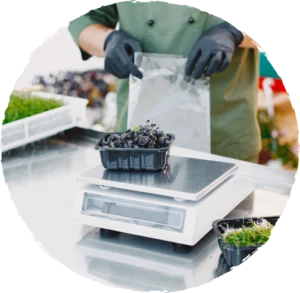
Harvested crops are brought immediately to the processing zone
We hand-sort herbs, remove foreign matter, yellow leaves, dirt, or immature parts
Cleaning is done using air blowers, sieves, or clean water (as per product requirement)
No chemical washing, bleaching, or polishing is ever used
- Sun drying & Shade Drying
Processing areas are GMP-compliant and sanitized regularly
Workers use gloves, masks, head caps, and work under strict SOPs
No cross-contamination is allowed between batches
Machines are cleaned before and after each use
- Labeled for internal testing or client COA (Certificate of Analysis) preparation
🧱 Pillar 7: Traceability & Batch-Wise Documentation
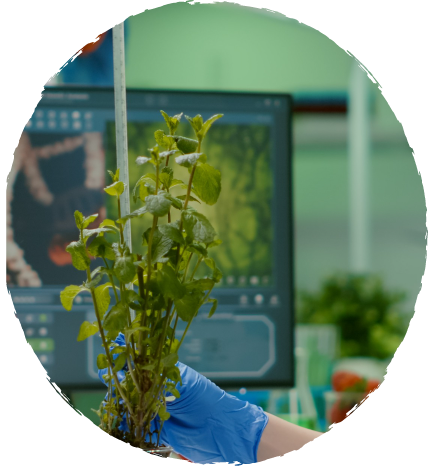
In today’s market, traceability is the difference between a generic product and a value-rich, verified harvest.
That’s why every single crop we grow, process, or supply is documented at every step — from land to lab, from seed to spoon.
Seed to Sowing
-
Seed batch number, variety type (GMO-free or heirloom)
-
Date of sowing, plot number, and assigned farmer
-
Weather and soil condition record at time of planting
Input & Cultivation Monitoring
-
Natural input types (Jeevamrut, neem spray, etc.) logged by date and quantity
-
Any disease control activity or variation recorded
-
Interventions approved only with internal documentation
Harvest Tracking
-
Harvest date, time, location
-
Field photographs or GPS tagging
-
Harvest done by whom, and under what method (manual, semi-manual)
Post-Harvest Log
-
Drying method (sun, shade, tray)
-
Moisture % recorded before and after drying
-
Processing method: grinder ID, mesh size, cleaning done by whom
Batch ID Generation
-
Every product is assigned a unique Batch ID
-
This batch ID carries the full story of the product
-
Can be linked to COA, microbial test, export file, or consumer scan (QR in future)

